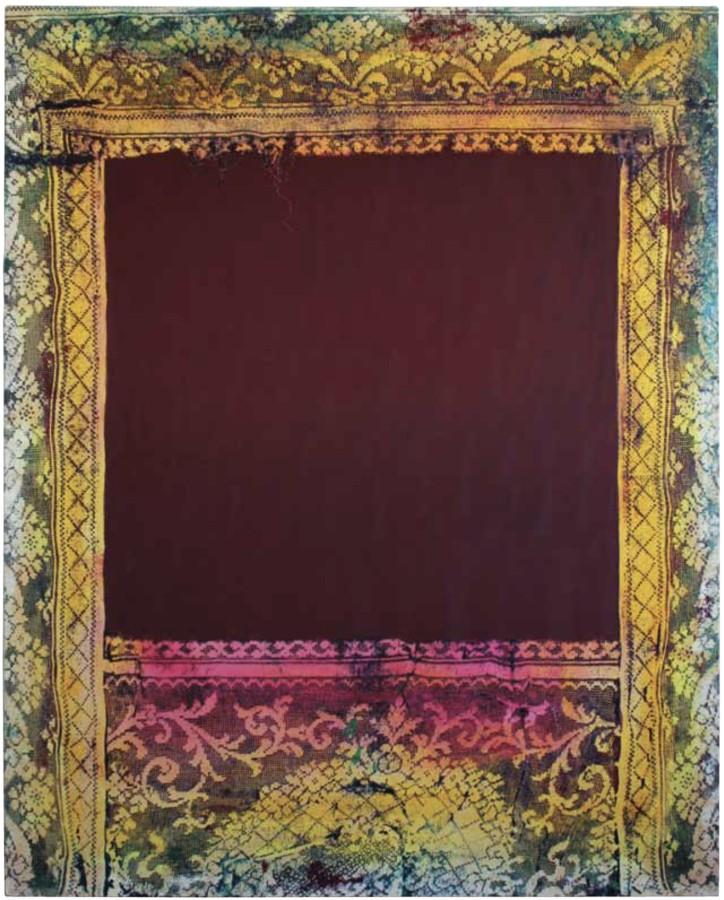March 30, 2020
Mark Flood’s Hateful Years, published by Luxembourg & Dayan, New York, 2012.
Mark Flood began his series of “Lace” paintings around 1999, and they quickly became an integral part of his mature oeuvre. These incontestably beautiful abstract paintings might seem like a non-sequitur in Flood’s practice, but conceptually they stem from his overarching obsession with anachronistic cultural signifiers. The origins of the “Lace” paintings can be traced to the very same Houston thrift stores where other bodies of work began: Bolts of lace, intricately patterned old tablecloths, and curtains were sourced from the shops where he found the canvases for the “Stick Figures” as well as the “Idols” and “Monsters.” As in his other recuperations of artifacts from yesteryear—like a “muted” Coke bottle or an overpainted Sunday painter’s canvas—Flood has rescued discarded relics from oblivion through his painterly process, in this case impregnating bits of old lace with successive layers of paint in order to create patterns on canvas.

Sunday Morning, 2012, Acrylic on canvas, 60 × 48 inches; 152.4 × 121.9 cm.
Steeped in Flood’s erudition of late-twentieth-century abstraction, the “Lace” paintings represent an aesthetic coming-out of sorts. As they do not have an immediately legible reference to pop culture, they mark the first time Flood entered into a direct dialogue with the rarefied world of “postmodernist” painting. His systematic procedure of precisely layering fabric and paint together recalls both the palimpsests of color in Gerhard Richter’s so-called squeegee paintings or “Abstraktes Bild” series as well as Rudolf Stingel’s silver ornamental paintings with baroque damask wallpaper. The earliest “Lace” paintings were used as supports for large color Xeroxes to be collaged on their surface. But as the body of work evolved, Flood dropped the collage elements, allowing the abstract compositions to be autonomous. They became increasingly dense and complex as he experimented with tearing the open-work fabrics to create elaborate arrangements of texture and pattern, and as he expanded the range of his palette, he carried the “Lace” paintings into exuberant chromatic terrain.
While the “Lace” paintings are not exactly part of the Hateful Years chronology of the 1980s, they provide a timely epilogue to this exhibition. Not only do they reflect the continuum of Flood’s art practice, but they provide a meditation on the necrophilia associated with the “dead” medium of painting itself—a Floodian ode to Arsenic and Old Lace.

Roman Altar, 2012,60 × 48 inches; 152.4 × 121.9 cm.


